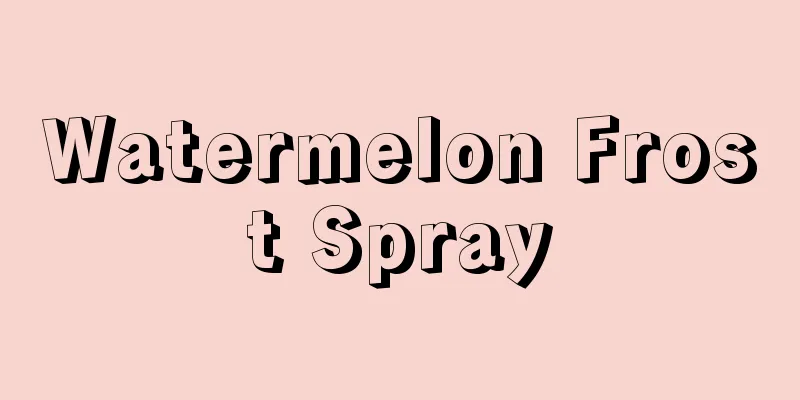Watermelon Frost Spray

|
What about watermelon frost spray? Many people don’t know much about it. It is a very common medicine, but many people are not very satisfied with its effects. Therefore, before choosing it, you should have a good understanding of it, especially its many aspects in treating diseases. When using it, you cannot use it without restraint, otherwise it will cause great damage to all aspects of the body. What about watermelon frost spray? When using such things, you should also be careful not to use them casually. It is very effective in reducing swelling, relieving pain, clearing away heat and detoxifying. It is a very good choice and beneficial to the development of all aspects of the human body. Watermelon Frost Spray: Watermelon frost, forged borax, Phellodendron, Coptis chinensis, Sophora flavescens, Belamcanda chinensis, Fritillaria thunbergii, Indigo naturalis, Borneol, Rhubarb, Mu Han Guo (charcoal), Scutellaria baicalensis, Licorice, Menthol. Excipients: silicon dioxide, stevioside, citric acid. Identification (1) Take 0.5 g of this product, add 3 ml of water, shake, filter, and add 1 ml of barium chloride test solution to the filtrate to generate a white precipitate. Separate it and the precipitate will not dissolve in hydrochloric acid. (2) Take 0.5 g of this product, add 2 ml of sulfuric acid, mix, add 8 ml of methanol, ignite and burn, a flame with a green edge will appear. (3) Take 1 g of this product and sublimate it. The sublimate is colorless or white amorphous crystals with a faint fragrance. Take about 10 mg of the crystals, add a few drops of ethanol to dissolve, and add 1 to 2 drops of freshly prepared 1% vanillin sulfuric acid solution, and it will turn purple. (4) Take 2 g of this product, add 20 ml of ethanol, let it stand for 1 hour and shake it from time to time, let it stand, filter, and use the residue for later use. The filtrate was evaporated to dryness in a water bath, dissolved in 15 ml of water, and 0.5 ml of hydrochloric acid was added dropwise. The mixture was placed in a water bath and heated for 30 minutes. The mixture was immediately cooled with running water and extracted twice with 15 ml of ether. The extracts were combined and the ether was evaporated. The residue was dissolved in 0.5 ml of chloroform to prepare the test solution. Take 0.15g of Indigo naturalis and 0.1g of Rhubarb as reference medicinal material, and prepare reference medicinal material solutions in the same way. According to the thin layer chromatography test, 20-30 μl of each of the three solutions mentioned above were respectively spotted on the same silica gel G thin layer plate to form strips, and petroleum ether-ethyl acetate-formic acid (75:25:1) was used as the developing agent. The plate was developed, taken out, and dried. In the chromatogram of the test sample, stripes of the same color and red color appear at the corresponding position of the chromatogram of the Indigo reference medicinal material. When examined under ultraviolet light (365 nm), 3 to 4 identical yellow fluorescent spots will appear at the corresponding positions on the chromatogram of the rhubarb control medicinal material. After being placed in ammonia steam and examined under natural light, the stripes turn orange-red. (5) Take the reserved residue under [Identification] (4), add 5 drops of 1 mol/L sodium hydroxide solution and 15 ml of chloroform, heat and reflux in a water bath for half an hour, filter, evaporate the filtrate to dryness, dissolve the residue in 5 ml of chloroform, filter, and concentrate the filtrate to 0.5 ml as the test solution. Take 0.1 g of Phellodendron chinense and 0.2 g of Sophora flavescens as control medicinal materials, and prepare control medicinal material solutions in the same way. According to the thin layer chromatography test, 2-6 μl of each of the above four solutions were taken and spotted on an unactivated silica gel G thin layer plate, and n-butanol-acetic acid (7:3) was used as the developing agent. The plate was developed, taken out, dried, and examined under ultraviolet light (365 nm). In the chromatogram of the test sample, the same 2 to 3 yellow fluorescent spots appeared at the corresponding positions of the chromatogram of the Phellodendron chinense counter-drug material; when sprayed with dilute potassium bismuth iodide test solution, the yellow fluorescent spots turned orange-red; at the corresponding positions of the chromatogram of the Sophora flavescens control drug material, the same 2 orange-red spots appeared. Through the above introduction, we have a good understanding of watermelon frost spray, so we can use it with confidence. However, it should be noted that we cannot use it casually when using it. We must use it according to the needs of our own disease. Only in this way can it be of great help in improving the disease. |
<<: The difference between sunscreen and sunblock lotion
>>: Watermelon Frost Toothpaste
Recommend
What food is good for a sore throat
If you have a sore throat, you should pay attenti...
I always smell the stinky green taste in my mouth
Each of us has some smell. Sometimes the smell in...
Teratoma should be comprehensively prevented and treated
The treatment of teratoma is difficult, and now p...
Will pathological diagnosis lead to the spread of lymphoma?
For lymphoma, which has different sites of onset ...
What are the magical uses of Kudingcha
The health-care effects of Kuding tea are widely ...
Can poisonous snake meat be eaten?
I believe that everyone has often seen cases of d...
Why do teeth bleed easily?
Teeth are the part of the body that we care about...
Can cancer targeted drugs treat brain cancer?
Targeted drugs have a certain effect on brain can...
What kind of flour is water chestnut powder
Water chestnut starch is made from sago. When it ...
What is the reason for stomach bloating and farting
Stomach bloating and flatulence are common phenom...
Is my mother's lung cancer hereditary?
If a mother has lung cancer, will it be passed on...
What foods should not be eaten before going to bed?
Food is something we come into contact with every...
Vitamin B6 removes closed comedones
In life, everyone is likely to get injured on the...
The most important health care for uterine cancer
Among cancer diseases, uterine cancer is one of t...
What are the symptoms of mad cow disease
Mad cow disease is also known as bovine spongifor...









